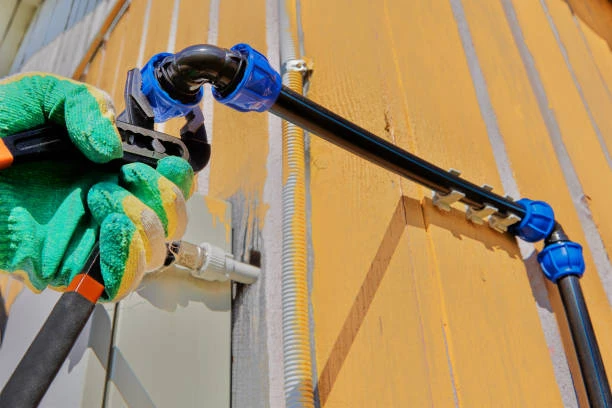1. Introduction to Ball Valve Maintenance
Maintaining ball valves is crucial for extending their service life. These valves play vital roles in many industrial applications. Proper maintenance ensures they operate efficiently and reliably. Regular inspections and maintenance routines help identify potential issues early. Additionally, understanding the specific requirements for relief valves is essential. These valves help manage pressure within systems, preventing failures. This article explores the best practices for maintaining ball valves to ensure longevity and performance.
2. Understanding Ball Valve Components
To maintain ball valves effectively, one must understand their components. A ball valve consists of a spherical disc, valve body, and seats. The ball controls the flow of fluid through the valve. The seats create a tight seal when the valve is closed. Additionally, stem and handle components allow for operation. Regular inspection of these components helps identify wear and damage. Understanding the function of each part aids in developing a proper maintenance strategy.
3. Importance of Regular Inspections
Regular inspections are vital for maintaining ball valves. Inspections should occur at scheduled intervals, depending on usage and application. During inspections, technicians should check for leaks, corrosion, and wear. For instance, if relief valves show signs of wear, they may not function correctly under pressure. Identifying issues early can prevent costly repairs and downtime. Moreover, inspections help ensure compliance with safety regulations. Maintaining a consistent inspection schedule enhances the overall reliability of ball valves.
4. Cleaning Ball Valves
Cleaning ball valves is an essential aspect of maintenance. Accumulated debris can hinder valve performance and lead to failures. To clean the valve, first isolate it from the system. Then, disassemble it carefully according to the manufacturer’s guidelines. Use appropriate cleaning agents to remove buildup without damaging components. After cleaning, inspect all parts for wear or damage. Reassemble the valve and test it to ensure proper operation. Regular cleaning extends the service life of ball valves.
5. Lubrication and Sealing
Proper lubrication is crucial for the longevity of ball valves. Lubrication reduces friction between moving parts and prevents wear. Use the manufacturer-recommended lubricant for best results. Apply lubricant to the stem, seals, and other moving components. Additionally, inspect seals for signs of wear or damage. Seals play a critical role in preventing leaks, especially in relief valves. If seals are compromised, replace them to maintain efficiency. Regular lubrication and sealing maintenance ensure smooth operation.
6. Addressing Common Issues
Ball valves can experience various issues that affect performance. Common problems include leaks, sticking, and difficulty in operation. If a valve leaks, check the seals and tightening mechanisms. For sticking valves, inspect for debris or corrosion that may hinder movement. Relief valves may require special attention to ensure they open at the correct pressure. Addressing these issues promptly prevents further damage and extends the service life of the valve. Regular maintenance routines can minimize these common problems.
7. Training and Best Practices for Personnel
Proper training for personnel is essential for effective ball valve maintenance. Technicians should understand the specific requirements for maintaining different types of valves. Training should cover inspection techniques, cleaning methods, and troubleshooting practices. Moreover, personnel must be familiar with safety protocols when working on valves. Implementing best practices ensures that maintenance routines are executed correctly. Continuous education and training enhance the overall efficiency of maintenance operations.
8. Conclusion: Ensuring Longevity of Ball Valves
In conclusion, maintaining ball valves is critical for extending their service life. Regular inspections, cleaning, and lubrication play vital roles in ensuring optimal performance. Understanding the components and addressing common issues enhances reliability. Additionally, special attention to relief valves is necessary for maintaining pressure control. Investing in training for personnel ensures that maintenance practices are effective and efficient. By following these best practices, industries can maximize the longevity and performance of their ball valves, ensuring smooth operations in various applications.
IFAN Products international standards
IFAN products strictly adhere to a comprehensive range of international standards, encompassing ISO 15874, EN 15874, ASTM F2389, DIN 8077/8078, GB/T 18742, NBR 15884, ISO 15494, EN ISO 15494, GB/T 19472, NBR 15494, ASTM 2846 (501), DIN 8079/8080 (502), ASTM F441/F441M SCH80 (503), DIN (504), DIN (505), GB/T 18993, AS/NZS 1477, CSA B137.6, NSF/ANSI 14, TIS 17-2532/1131-2535, BS 3505, BS 4346 (801), ASTM D1785 SCH40 (802), ASTM D1785 SCH80 (803), DIN (804), GB (805), GB (806), GB(901), DWV(902), ASTM D2665 (903), along with ASTM D2241, D2665, D2729, and F441/F441M series, ISO 1452, EN ISO 1452, DIN 8061/8062, GB/T 10002, AS/NZS 1477, JIS K6741, CSA B137.3, and other national and industry norms.
Connect
IFAN is a Chinese manufacturer of plastic pipes, fittings and valves with 30 years of experience. If you are interest in IFAN copper fittings, copper valves, plastic pipes and fittings, please contact us. IFAN offers you a variety of standard pipes to meet your specific needs. Click below to learn more about IFAN’s wide range of affordable and cost-effective valve products and piping system related products.
We will reply your email or fax within 24 hours.
You can call us at any time if there is any question on our production.
For more information,pls visit our webside https://waterpipefitting.com/
Pls Mailto: [email protected]
Whatsapp: +86 15088288323














Recent Comments